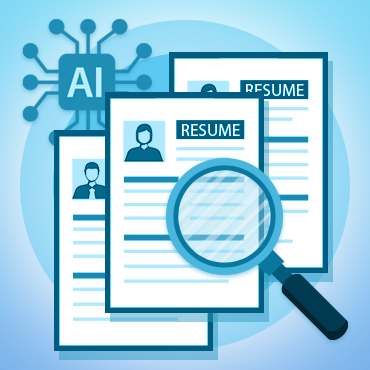AI-Based Recruitment and Interview Platform
The QuData team has created an AI-powered recruitment platform that screens resumes, conducts interviews, and provides objective candidate evaluations. Employers benefit from a fast and high-quality hiring, while candidates gain personalized guidance to enhance their performance.

 Business Challenge
Business Challenge
Recruitment has always been a balancing act. Employers need to quickly identify the most qualified candidates while minimizing the risk of bias, human error, and inefficiency. Screening large volumes of resumes manually is time-consuming and often inconsistent, and traditional interviews may fail to evaluate candidates comprehensively or objectively. At the same time, applicants face significant struggles in presenting themselves effectively. Many candidates lack structured feedback on their skills, interview techniques, and communication style, making it difficult for them to learn from past experiences or improve over time.
The challenge was to create a solution that accelerates hiring, reduces bias, and improves decision-making for employers while also offering job seekers a practical training environment to strengthen their chances of success. Bridging this gap required leveraging AI to automate and standardize processes as well as to provide personalized training experiences for candidates.
This dual approach can not only reduce the cost and time of recruitment but also raise the quality of shortlists for HR teams. Candidates, meanwhile, become better prepared and more confident, which increases their chances of success.
 Solution Overview
Solution Overview
We developed a platform that provides employers with intelligent tools that can parse resumes, compare skills to job requirements, and conduct structured AI-led interviews. At the same time, candidates benefit from a realistic interview practice environment. By integrating both perspectives, the platform creates a seamless digital pipeline.
Resumes and job descriptions are first transformed into structured data by natural language processing models, which makes it possible to compare candidate profiles with job requirements in an automated and transparent way. The interview stage is then handled by conversational AI agents that generate vacancy-specific questions, guide the session, and evaluate the completeness of the answers. Candidates can participate via text or voice, and automatic transcription ensures that spoken responses are handled with the same precision as written ones.
After each interview, the system produces a structured evaluation, summarizing technical and soft skills, communication style, and overall role fit. Employers gain access to reports and comparisons, while candidates receive personalized summaries with suggestions for improvement. Data is stored securely in a structured relational database, ensuring consistency across all phases of the recruitment cycle.


 Technical Details
Technical Details
The system is built on a lightweight yet scalable architecture. The backend is a collection of FastAPI services that orchestrate calls to language models through LangChain, which handles prompt templating, context injection, and output parsing. Candidate responses are captured, processed, and transformed into structured evaluations before being written into PostgreSQL tables.
The database schema was an important design decision. We implemented a normalized structure with separate entities for jobs, candidates, applications, interviews, and feedback. To accommodate the variability of AI-generated outputs, key tables include JSONB fields that can store flexible objects such as skill breakdowns, strengths, and improvement notes. This avoided the need for frequent schema migrations while keeping the core relational structure intact.
On the frontend, Node.js and TypeScript were selected for their ecosystem maturity and ease of building multilingual interfaces. The platform supports English and German, with internationalization hooks prepared for further expansion. Candidate and employer dashboards are built as modular views that query the backend directly via REST endpoints.
Deployment initially runs on Hetzner VPS instances with 2–4 vCPUs and 8–16 GB RAM, which is sufficient for handling API requests and basic LLM integration. Services are containerized with Docker, making it straightforward to migrate to Kubernetes or another orchestration layer once load increases.
Authentication was deliberately kept simple for the system, with public read access to some entities to accelerate early testing. For production deployment, Supabase’s row-level security and JWT-based authentication are enabled. Stripe integration was added to handle monetization through subscription tiers and pay-per-use models. Google Tag Manager and custom analytics hooks provide insight into usage patterns and help guide product development.
In terms of requirements, the platform is lightweight enough to run comfortably on mid-tier VPS infrastructure with about 200 concurrent active users. Scaling options include horizontal container replication for the backend and database connection pooling.
Technology Stack

Python

LangChain

Node.js

React

TypeScript

